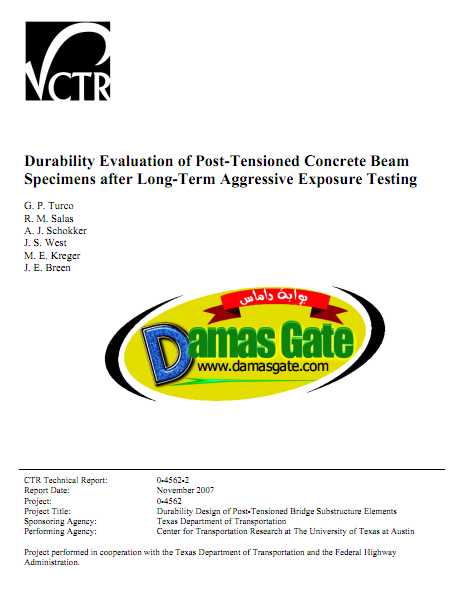Durability Evaluation of Post Tensioned Concrete Beams

1.1 Background
Post-tensioned concrete has been widely used for bridge construction since its introduction in the 1950s. Post-tensioning allows for the attainment of longer span lengths with the use of smaller members and for better crack control than typical reinforced concrete. In addition, it allows for reduced congestion of reinforcement as well as better continuity of reinforcement. Bonded post-tensioning systems involve the use of tubes (known as ducts) cast within the concrete. Typically, these ducts have curvature along the length of the structure. Following the attainment of the specified concrete strength, the post-tensioning force is applied through seven-wire strands placed inside the duct. The strands are then anchored by tapered wedges within an anchorhead (a typical post-tensioning hardware configuration is shown in Figure 1.1). Following this, grout is pumped into the duct forming a multilayer system of protection for the strand and, with internal tendons, bonding the strands to the structure. However, in recent years durability issues have arisen with the use of such systems.
Download
*